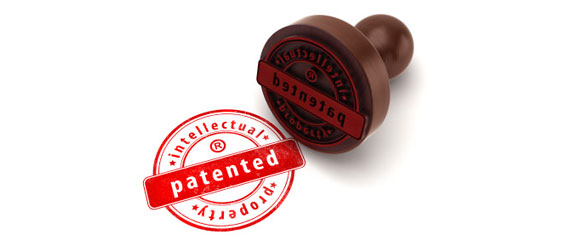Amazon’s Studio Lighting Patent – What’s Wrong With This Picture?
After Shoot the Centerfold broke the story on the Amazon Studio Arrangement patent (Patent Number 8,676,045 or the “045 patent”) on May 2, 2014, the story went viral on the internet causing a worldwide commotion among both photographers and legal critics of the patent process.
HOW THIS STORY GOT STARTED – I stumbled across the ‘045 patent in the middle of the night because I woke up with an idea for a photography gizmo, and wanted to see if there was anything else like it that had been patented already. I went to the USPTO website and started a very broad search in the photography category, because I really didn’t know where else to start so I decided to “start at the top.” By chance the Amazon patent was near the top of the search results list because it had just been granted, and I downloaded it and read it. I was shocked when I read the patent. How could this be patented? Then I became suspicious. What are Amazon’s intentions with this patent? I even wrote a letter to Amazon asking about their intentions with this patent.
At its peak, the story became material for a Colbert Report segment where Colbert (who is well-known for his hostility toward Amazon) lampoons the patent in his own unique style of satirical news reporting. Many photographers have weighed in with their opinions, concerns and discontent about the patent from the popular “Strobist” blogger David Hobby, to an official statement from the Professional Photographers of America. On the other side of the fence sits blogger Rebecca Allen (a former Amazon employee, and non-photographer) who disapprovingly chortles that the “commentariat” didn’t bother read the patent. Allen attempts to disprove that any “prior art” exists that might have stymied the patent, and labels anyone engaged in the “rabid mockery of Amazon’s studio arrangement patent” as being part of a flock of bleating sheep. To which I say: Baah-Baah.
WHAT’S WRONG WITH THIS PICTURE? – I am an attorney and a photographer, and I actually read the patent (as many people did) and the “patent wrapper” (which many people didn’t read) which is the source of much of the detail in this article. It seemed obvious to me that what the USPTO examiner failed to do in researching the Amazon Studio Arrangement patent was to search any non-patent documents such as photographic trade publications, photographic lighting or studio lighting books, etc.
 To the average person, it seems only logical that if the patent examiner had performed a search for prior art on the internet, it is likely that it would have revealed a wealth of non-patent publications showing this same or substantially similar studio lighting arrangement was already in widespread use around the globe. For example, a Google search of “white cyclorama studio lighting” yields over 20,000 results.
To the average person, it seems only logical that if the patent examiner had performed a search for prior art on the internet, it is likely that it would have revealed a wealth of non-patent publications showing this same or substantially similar studio lighting arrangement was already in widespread use around the globe. For example, a Google search of “white cyclorama studio lighting” yields over 20,000 results.
WHO’S BAD? – While this common-sense approach might seem like the way the patent examination process should go in theory, in reality, the process is nothing like that. It’s bad patent laws, and not bad patent examiners that allow patents like the ‘045 patent to get approved, according to Charles Duan, Director of the Patent Reform Project at Public Knowledge. Duan, an IP attorney, wrote an article published in Ars Technica entitled: “How Amazon got a patent on white-background photography – A drama in five acts: bad laws, not bad examiners, create obvious patents.” In his article, Duan draws on the public records contained in the “patent wrapper” and brings them to life in a “docu-drama” style story that reconstructs how the ‘045 patent was granted to Amazon.
A PATENT GRANTED ON 25 WORDS? – In Duan’s professional opinion, approval of the ‘045 patent hinges on twenty-five words found in Claim #3 of the patent:
“Claim 3. The studio arrangement of claim 2, wherein the first distance is about 4.5–5.5 times a height of the top surface of the elevated platform.”
As a photographer, I struggled to believe that these 25 words were the clincher for granting a patent to Amazon, when the “invention” was meant to “achieve a desired effect of a substantially seamless background.” I thought to myself, the distance ratio has little or nothing to do with achieving the desired effect! How could this be right? As an attorney, I struggled even harder to believe that these 25 words were what made this “non-obvious,” so I emailed Duan to express my frustration with his analysis, and he kindly responded to me. Duan responded to me by saying:
“In terms of your difficulty in understanding why Claim 3 clinched the patent: that’s exactly the difficulty I wanted you to experience, because it shows a real conflict between how the law works and how we imagine it should work.”
THE REAL WORLD CONFLICT – In his article Duan points out the problems with prior art, the patent laws and the practical realities of what happens during an examination, by saying “No one would write an article with that exact distance ratio or file a patent application about it. No one would want to do so. It was too uninteresting a feature to have ever merited any attention. Who knew if Saigo [the prior art cited by the examiner] had used that distance ratio—Saigo’s application didn’t say. Who knew how many other photographers had actually used that distance ratio before—it didn’t matter, since it wasn’t on paper before [the examiner]. Who knew if some college dissertation mentioned the exact numbers—with only a few hours left, and with a stack of other applications to examine, this examiner would not find it.”
He goes on to say that “Photography against a white background is obvious, but photography against a white background at a certain distance is nonobvious? The examiner could perceive no reason why that 4.5–5.5 ratio was advantageous, and the text of the application revealed none. If this patent issued, it would not be because the invention was an improvement; it was because this Studio Arrangement claim was different. Not better, just different. But, the law said, that was enough to grant a patent. And [the examiner] would comply with the law.”
FEDERAL EMPOLYEE WORKING ON MEMORIAL DAY? – When I did some digging into the “patent wrapper” and other public records related to the Amazon Patent (presumably the same documents that Duan relied upon for his story) these are the facts that caught my attention, or seemed odd to me. For example, Rochelle-Ann J. Blackman the patent office examiner examined the patent during a federal holiday, on Memorial Day in 2013.
EXAMINER’S RESEARCH DONE IN TIME FOR LUNCH? – The amount of time spent researching this patent seems very brief to me. Examiner Blackman began by searching the USPTO’s database system for existing patents and prior art just before 8:00 AM, and by lunchtime (12:07 to be exact) she had found patent number US 20030206735 A1 (the Saigo patent) as relevant prior art, that could be used to reject Amazon’s patent application.
AMAZON PATENT REJECTED – Later the next week, on June 7, 2013 examiner Blackman sent an Office Action Summary – Non-Final Rejection to Amazon’s patent attorneys Thomas Horstemeyer, rejecting various of Amazon’s claims, citing Saigo’s studio arrangement patent. With only one piece of prior art being cited as an obstacle to Amazon having their application granted, attorney Reddy contacted examiner Blackman by telephone on August 29, 2013 to discuss the Saigo prior art, and to discuss with Blackman “proposed amendments, more specifically the way the previously indicated allowable subject matter would be incorporated in the amended claims.” Attorney Reddy filed Amazon’s legal arguments and remarks why Amazon’s claims 1-24 and 26-28 are allowable over Saigo, on October 7, 2013. In that same filing attorney Reddy reminds examiner Blackman that an “agreement was reached during the Telephonic Interview with the Examiner regarding amendments to the claims that would result in allowance of all pending claims.” At the same time, Reddy also submitted Amazon’s amended claims and stated in the arguments and remarks filing that the “Applicant respectfully requests that the rejections … be withdrawn in view of the amendment made herein.”
AND THE REST IS HISTORY – One Sunday evening late in October, Blackman did a search a search of prior art, and a search of the patent applicant/inventor names (Sawatzky, Porter, Strauss and Blank) and performed and “Interference” search using other search terms, such as: “background and white or cyclorama” etc. About a week later on October 28, 2013 the USPTO sent Amazon’s attorneys a Notice of Allowance and Fee(s) Due, and Amazon paid the fees for the patent on January 28, 2014. On February 26, 2014 the “Issue Notification” was sent to Amazon with an Issue Date of March 18, 2014 for patent number 8,676,045.
EPILOGUE – When this story originated, I sent a certified letter to Amazon’s General Counsel and to Jeff Bezos, expressing my opinions about this patent, inquiring about what their intentions were with regard to this patent, and requesting a response to my inquiries from Amazon Technologies. As of the date of this writing, I have not received any reply from Amazon, and I doubt that I ever will.
What will happen next? Will Amazon try and enforce this patent? If so how? What would happen if they sell it to someone else? Or is this just part of their ever-growing inventory of patents that they have obtained to serve some other purpose? Your guess is as good as mine.
By: Dana L. Manner

© 2014 Copyright ShootTheCenterfold.com. All rights reserved.




















